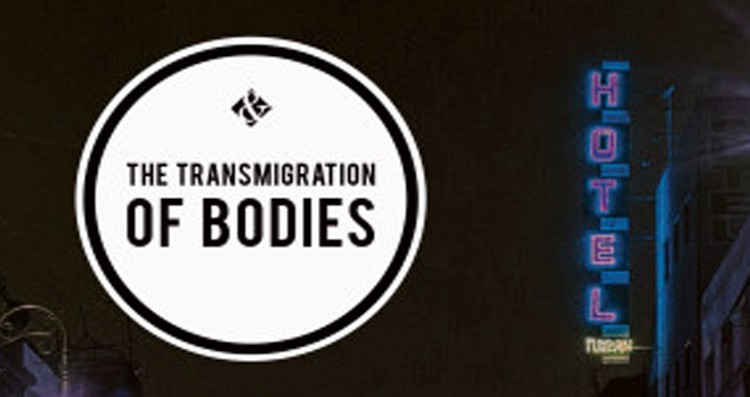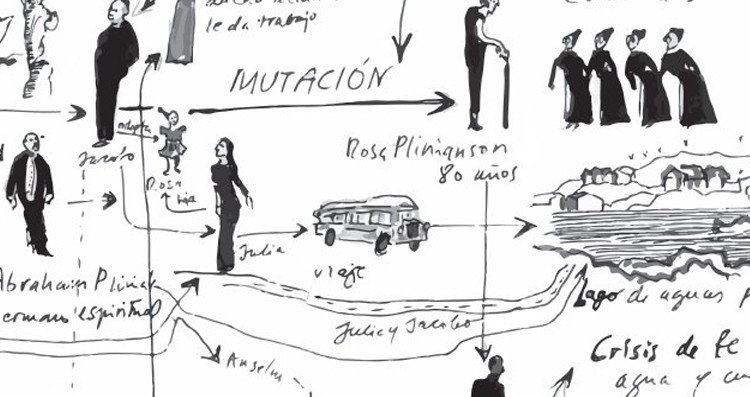Books & Culture
How To Love Sudden Death by Álvaro Enrigue (And Also How Not To)

You may be tempted to try to get a sense of Sudden Death by Álvaro Enrigue before you read it. You might want to read some reviews. You might want to peruse the back cover or at least plug it in to Google. Don’t bother. If its preparation you are looking for, nothing will prepare you. Simply put, Sudden Death is not going to make sense until you read it and maybe not even then. Reading Sudden Death is an exercise in uncertainty.
But in the spirit of helpfulness, here is what happens between the covers of Sudden Death:
About half of the book’s chapters take place at a fictional tennis match between the Italian painter, Caravaggio and the Spanish poet, Quevedo. As for the other half of the chapters, which Enrigue intersperses with his fictional tennis match, anything goes — some chapters summarize historical events from the sixteenth and seventeenth centuries like the execution of Anne Boleyn, some present funny and moving portraits of historical figures from that time like Hernan Cortes, his daughter Doña Isabel and many many others, several chapters dramatize the creation of Caravaggio’s more famous paintings — in one chapter, Enrigue includes a screenplay starring Pius IV. Enrigue also includes a number of excerpts from seemingly historic texts about the game of tennis. And at one point, Enrigue inserts what appears to be an actual email exchange between himself and his publisher. Sudden Death is an overcoat lined with many pockets, each pocket containing a world. Sudden Death defies summary, and explaining what happens between the covers only makes the book more confusing.
At the beginning of the book’s final salvo Enrigue interjects himself into the chapter just to clarify that even he isn’t sure exactly what he’s doing here — mind you, this on page 203 of 262:
As I write, I don’t know what this book is about. It’s not exactly about a tennis match. Nor is it a book about the slow and mysterious integration of America into what we call “the Western world” … maybe it’s just a book about how to write this book; maybe that’s what all books are about.
While one could make the argument — and indeed, Enrigue does — that the novel’s structure is very much like a game tennis, the narrative bouncing back an fourth unpredictably from one scene to another, much like the first hair and putty balls that were used in the wild street game, which eventually became modern day tennis, one could also argue that this book is an undisciplined mess, and Enrigue’s tennis-as-structure analogy feels more like an afterthought than a stroke of genius. That may sound uncharitable, but an author should not need to gesture toward a novel’s unifying principle — it ought to be self-evident in the writing. That Enrigue feels he needs to actively nudge the reader toward his organizational premise suggests that he is afraid it isn’t immediately accessible, which it isn’t, which is troubling.
Here is how you read Sudden Death if you want to enjoy it: grease it up and swallow it down whole, with all of its inconsistencies, appreciating, above all, the enthusiasm and wonder with which Enrigue seems to approach his work. There is freshness to the way these disembodied scenes add up to inhabit the early baroque world. And even though Sudden Death becomes one thing and then it becomes something else, it adds up, and there is resolution and there is momentum. The book is full of surprising turns, and it is fun to read. I assume it was for these reasons that Enrigue’s original Spanish version, Muerte Súbita, won the Herralde Prize in 2013. Enrigue weaves yarn after yarn leading his reader through the twisting passageways of his research — Enrigue wrote the Sudden Death during a fellowship at the New York Public Library’s Cullman Center. An open-minded reader will pardon his dust, follow where he goes, and profit from the experience.
A less charitable reader will find it disappointing that even though the book is carefully researched, the historical characters he presents are not particularly well developed. There are simply too many of them and the book is too short to support any depth from so many characters. But character complexity doesn’t seem to be Enrigue’s main point here. Sudden Death often seems more an intellectual exercise than a novel. Enrigue presents historical details side by side with fantasy, and unless you really know your sixteenth and seventeenth century European and American history, you’ll need to do some serious digging to parse Enrigue’s research from his inventions. Enrigue seems to delight in misdirecting his reader toward his fabricated worlds over his researched ones, which, since he takes an equally authoritative tone with both, makes his work less the academic post-modern tale spinning of Borges or Eco (a style which he seems to admire), and more a straightforward miseducation of the reader. If you do not want to enjoy Sudden Death, allow these missteps to bother you.
Sudden Death is your kid brother who keeps fucking up but has a heart of gold. You can’t help but admire the audacity, even if there are moments when it feels like a disaster. But what I love here, what redeemed Sudden Death for me, was Enrigue himself. Unlike the cliché, writer-as-God-perpetually-looming-over-the-work, Enrigue isn’t self-assured. If in fact, he seems genuinely not to know what is coming next. Enrigue makes himself vulnerable to his readers, which creates a sympathetic pathway into his work. Enrigue invites the reader to question him, to doubt him, to cheer him on. Mostly, the novel seems more an imaginative chronicle of time spent in research than a coherent historical narrative, and that’s fine, actually. Sudden Death isn’t really what it claims to be, but that’s part of its charm — the book doesn’t know what it is.
I’d say the real protagonist of Sudden Death is Álvaro Enrigue, himself. One could even say — to extend his own forced analogy — that Sudden Death is a tennis match between the author and the reader. If it is as Enrigue says and “it’s just a book about how to write this book,” one could also say that Sudden Death is a book about how to read Sudden Death. All reading is a dance in which the writer leads and the reader follows — or, we might say in this case, Sudden Death is a tennis match in which the Enrigue furnishes the court, the ball, and the house rules and the reader furnishes the skill to play along. In Sudden Death, Enrigue has delivered us a beautiful serve, but to return it, we must play his game and expect the unexpected.









